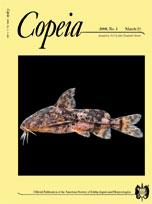The body condition of an animal reflects its energetic state such that an animal in good condition has greater energy reserves than one that is in poor condition. Body condition in turn should be positively correlated with fitness because energetic reserves limit the amount of energy that can be allocated to reproduction. Using Spotted Turtles (Clemmys guttata) as a model system, and three years of field data from a South Carolina, USA population, we tested the prediction that reproductive output increases with maternal body condition. The effect of body condition on the reproductive output of female turtles was examined at three temporal scales (among clutches, among nesting seasons, and among females) using several variables including clutch frequency, clutch size, and multiple measures of egg size. We predicted that females in good condition will have a higher clutch frequency than those in poor condition; that females in good condition will have larger clutch sizes than those in poor condition; and that females in good condition will have larger eggs than those in poor condition. Among clutches and nesting seasons, we found no relationship between female body condition and reproductive output. Among females over the entirety of the three-year study, we found a positive relationship between body condition and clutch mass and egg size. In addition, females in poor condition and females in good condition both produced larger clutch sizes than females in intermediate condition. Our findings suggest that within a given reproductive bout and within a given reproductive season, energy reserves do not affect immediate reproductive investment. However, over the longer-term, females in good condition have greater reproductive output, which supports the idea of a bet-hedging life history strategy in turtles.
How to translate text using browser tools
21 February 2008
Reproductive Output Depends on Body Condition in Spotted Turtles (Clemmys Guttata)
Jacqueline D. Litzgus,
Frances Bolton,
Albrecht I. Schulte-Hostedde
ACCESS THE FULL ARTICLE





